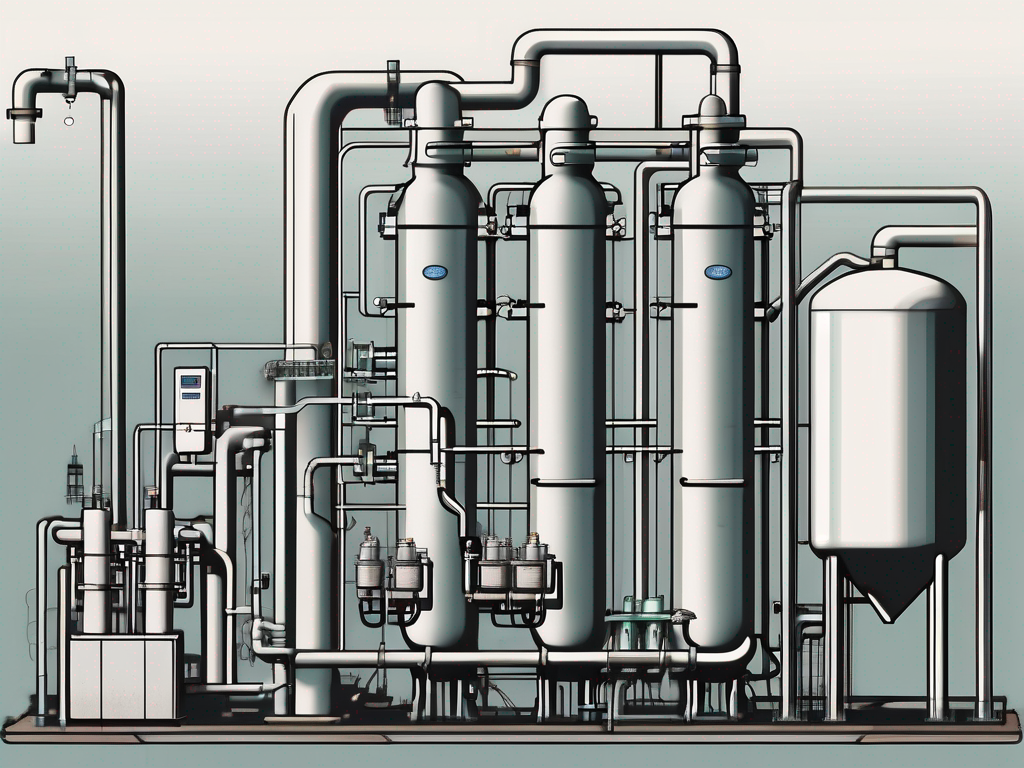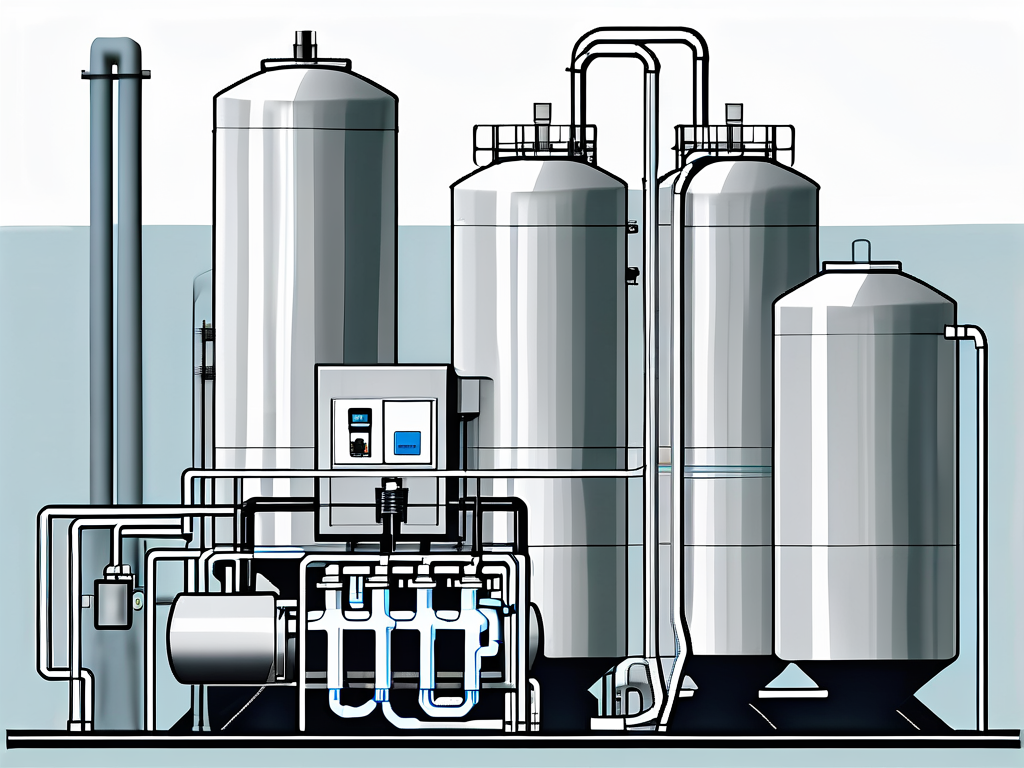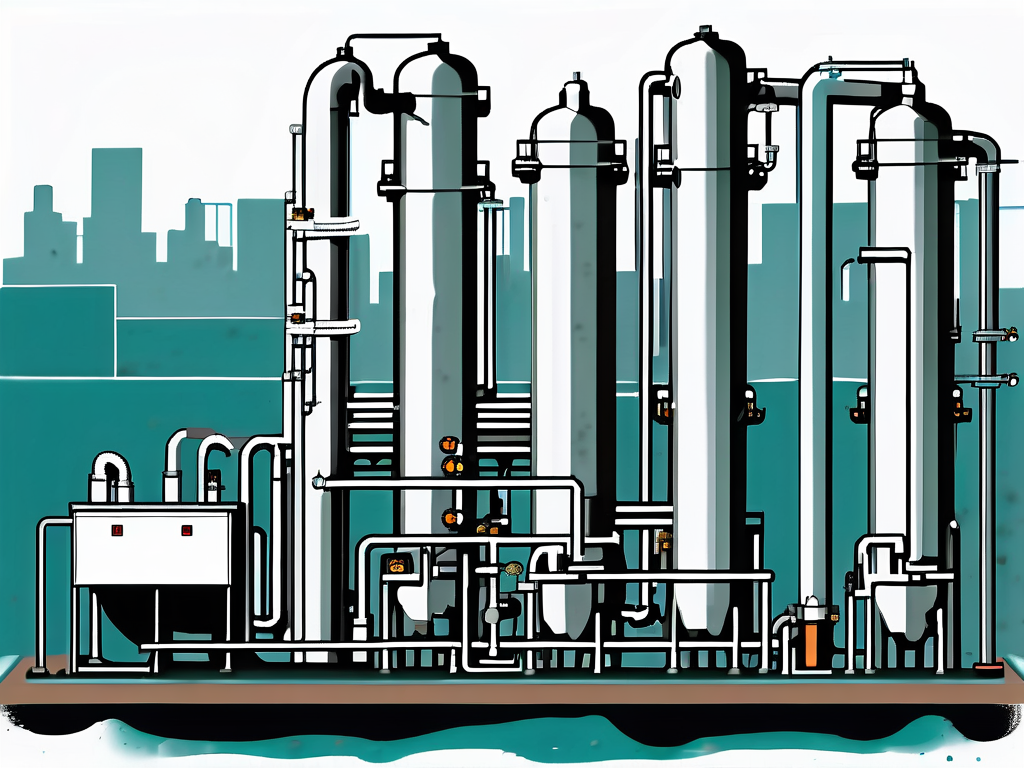
Lift Station Pump Repair: A Comprehensive Guide
Lift stations play a crucial role in modern waste management systems, ensuring that wastewater is effectively transported for treatment. A well-functioning lift station pump is vital to this process, and when failures occur, timely repair is essential. This guide aims to provide a thorough understanding of lift station pumps, common problems, maintenance strategies, repair procedures, and factors to consider when deciding between professional and DIY repairs.
Understanding Lift Station Pumps
Lift station pumps are specialized devices designed to move wastewater from lower to higher elevations, enabling the flow of sewage through gravity systems. The significance of these pumps cannot be overstated, as they serve as the heart of the lift station. These pumps are engineered to handle the unique challenges posed by wastewater, which can include solids, debris, and varying flow rates. Their robust design and operational efficiency are critical in maintaining the integrity of sewage systems, especially in urban areas where population density increases the demand for reliable waste management solutions.

The Role of Lift Station Pumps in Waste Management
In waste management, lift station pumps are responsible for lifting sewage and stormwater to ensure effective drainage and treatment. They are often situated in areas where gravity flow is insufficient or where wastewater needs to be transported over long distances. The strategic placement of lift stations is essential; they are typically located near low-lying regions or in areas where natural topography would impede the flow of wastewater. This careful planning ensures that the entire sewage system operates smoothly, reducing the risk of backups and flooding.
The efficient operation of lift station pumps helps prevent clogs and overflows, which can lead to environmental hazards. Regularly maintained and properly functioning lift station pumps are, therefore, essential for sustainable waste management. In addition to their primary function, these pumps often incorporate advanced monitoring systems that provide real-time data on performance metrics, allowing for proactive maintenance and timely interventions. This technology not only enhances operational efficiency but also contributes to the overall health of the ecosystem by minimizing the risk of untreated sewage entering waterways.
Key Components of a Lift Station Pump
A lift station pump comprises several key components that work together to perform its primary function. Understanding these components is crucial for effective troubleshooting and repair. Each part plays a vital role in ensuring that the pump operates at peak performance, and familiarity with their functions can significantly reduce downtime during maintenance.
- Pump Body: Contains the motor and impeller that move the water.
- Motor: Provides the power needed for the pump to operate.
- Impeller: A rotating component that moves water through the pump.
- Float Switch: A device that monitors water levels and activates the pump when necessary.
By understanding these components, operators can better identify the source of issues when disturbances arise. Additionally, lift station pumps may also feature backup systems, such as secondary pumps or generators, to ensure continued operation during power outages or equipment failures. This redundancy is particularly important in critical applications, where uninterrupted service is essential for public health and safety. Furthermore, advancements in pump technology, such as variable frequency drives (VFDs), allow for more precise control over pump speed and energy consumption, leading to enhanced efficiency and reduced operational costs.
Common Problems with Lift Station Pumps
Despite their robust design, lift station pumps are not immune to problems. Being aware of the common issues can help operators react swiftly to maintain performance and minimize downtime. Regular monitoring and maintenance are essential to ensure that these systems operate efficiently and effectively, as even minor issues can escalate into significant failures if left unaddressed.
Signs of Lift Station Pump Failure
Recognizing the signs of pump failure is crucial for timely intervention. Common indicators include:
- Frequent cycling of the pump, suggesting an issue with the float switch.
- Unusual noises such as grinding or humming, indicating motor or impeller problems.
- Visible leaks around the pump, which may suggest seals or housing issues.
Timely recognition of these signs can prevent more severe issues from developing, allowing for quicker repairs. Additionally, operators should be aware of fluctuating discharge pressure or reduced flow rates, as these can also signal underlying problems. Implementing a routine inspection schedule can help in early detection, ensuring that any anomalies are addressed before they lead to costly repairs or system failures.
Causes of Frequent Breakdowns
Several factors can contribute to the frequent breakdown of lift station pumps. Understanding these causes can help in formulating preventive strategies.
- Improper sizing: A pump that is too small may struggle to handle the load, leading to rapid wear.
- Inadequate maintenance: Neglecting regular maintenance can result in the buildup of debris and wear on components.
- Electrical issues: Fluctuations in power supply or wiring faults can lead to pump malfunctions.
By proactively identifying these issues, facilities can implement corrective measures to reduce downtime and extend the life of their pumps. Moreover, environmental factors such as temperature fluctuations and exposure to corrosive substances can exacerbate wear and tear on pump components. Regular training for staff on best practices in pump operation and maintenance can further enhance reliability, ensuring that personnel are equipped to handle potential issues swiftly and effectively.
Preventive Maintenance for Lift Station Pumps
Preventive maintenance is essential to ensure that lift station pumps function optimally over their lifespan. Regular checks and services can significantly reduce the likelihood of unexpected failures. By proactively addressing potential issues, facility managers can enhance the reliability of their systems and avoid costly downtime that can disrupt operations.
Routine Inspection and Servicing
Routine inspections should be conducted regularly to assess the condition of lift station pumps. A typical inspection may involve:
- Check the fluid levels and look for leaks.
- Inspect the electrical connections for signs of wear.
- Examine the float switch for proper operation.
A well-planned inspection schedule, ideally performed monthly, can catch issues before they escalate into costly repairs. Additionally, documenting each inspection can help track the performance trends of the pumps over time, allowing for more informed decision-making regarding repairs or replacements. This historical data can also be invaluable in identifying recurring problems that may require a more in-depth analysis of the system.
Importance of Regular Cleaning
Debris and sludge buildup can obstruct pump parts, impeding performance. Regular cleaning of the pump and associated components minimizes the risk of clogs and ensures smooth operation. This is particularly important in environments where pumps are exposed to varying levels of waste materials, as the type and amount of debris can fluctuate significantly.
Cleaning can involve flushing the system with clean water, removing accumulated debris, and ensuring that the impeller operates freely. This simple yet essential step cannot be overlooked in the maintenance routine. Moreover, using specialized cleaning agents can help break down stubborn sludge and grease, further enhancing the longevity of the pump components. Implementing a cleaning schedule that aligns with the inspection routine can create a comprehensive maintenance program that keeps lift station pumps running efficiently and effectively.
Step-by-Step Guide to Lift Station Pump Repair
When repair becomes necessary, having a clear step-by-step guide can simplify the process and aid in a successful outcome. Here’s how to approach lift station pump repair.
Safety Measures Before Starting Repair
Safety should always be the priority when working on lift station pumps. Before you begin any repair work, consider the following measures:
- Disconnect the power supply to the pump.
- Use proper personal protective equipment (PPE).
- Ensure the area around the pump is clear of obstacles and hazards.
Following these precautions protects both the technician and the equipment during repair operations. Additionally, it is advisable to have a first aid kit on hand and familiarize yourself with emergency procedures in case of an accident. Being prepared can significantly reduce the risks associated with electrical and mechanical work.
Troubleshooting Common Issues
Once safety measures are in place, troubleshooting can begin. Start by diagnosing the root cause of the problem. This may involve:
- Listening for unusual sounds during operation.
- Checking the float switch functionality.
- Examining electrical connections for loose or corroded wires.
By methodically addressing each potential issue, you can effectively pinpoint the source of the problem. It may also be beneficial to consult the pump's manual for specific troubleshooting tips tailored to the model you are working on. In some cases, utilizing diagnostic tools such as multimeters can provide deeper insights into electrical issues that may not be immediately visible.
Repairing or Replacing Parts
After identifying the problem, the next step is to either repair or replace components as necessary. Often, seals, gaskets, or the float switch may need replacement. Ensure that any new parts are compatible with the existing system for seamless operation.
If major components like the motor or impeller are damaged, consider seeking professional help to ensure that repairs are performed to industry standards. Furthermore, while replacing parts, take the opportunity to inspect other components for wear and tear. Regular maintenance can prevent future breakdowns and extend the lifespan of the pump. Keeping a log of repairs and replacements can also help track the pump's performance over time, allowing for more informed decisions regarding maintenance schedules.
Professional vs DIY Repair: What to Consider
The decision to undertake repairs on lift station pumps can boil down to a few key factors: expertise, complexity, and cost.

When to Call a Professional
Some repairs may require specialized knowledge, tools, or replacement parts. Consider enlisting a professional when:
- The issue involves electrical components that require certification.
- Repairs require disassembling significant parts of the pump.
- Diagnostic attempts have not led to a clear solution.
Professionals bring experience and knowledge that can save time and prevent costly errors. Their familiarity with various pump models and systems means they can often identify issues more quickly and accurately than someone without that background. Additionally, many professionals offer warranties on their work, providing peace of mind that if something goes wrong after the repair, it can be addressed without incurring further costs.
Cost and Time Considerations
When weighed against potential repair costs and time considerations, DIY repairs can be appealing. However, calculate the potential risks associated with attempting repairs without proper guidance. Missteps in the repair process can lead to further damage, which may necessitate even more extensive repairs than the original issue.
In some cases, the cheaper, quicker path of DIY repair can lead to greater expenses down the line if not executed correctly. Assess your capabilities honestly before making a decision. Consider the time you have available, as well as the learning curve associated with unfamiliar repairs. Sometimes, investing in professional help can actually save you time and stress, allowing you to focus on other important tasks while ensuring that the repair is done right the first time. Moreover, understanding the long-term implications of your choice can help you make a more informed decision that aligns with your operational goals.
Prolonging the Lifespan of Your Lift Station Pump
To maximize the lifespan of lift station pumps, implement practices focused on maintenance and part quality.
Best Practices for Pump Care
Neglecting care can shorten the lifespan of lift station pumps. Consider the following best practices:
- Adhere to a strict inspection schedule.
- Immediately address any small problems to prevent escalation.
- Provide ample ventilation around the pump to avoid overheating.
Consistency and attention to detail will lead to increased reliability and efficiency. Furthermore, it is essential to keep the surrounding area clean and free from debris that could obstruct the pump's function. Regularly cleaning the inlet and outlet pipes can prevent blockages that may cause undue stress on the pump, leading to premature wear and tear. Implementing a monitoring system that tracks performance metrics can also help identify potential issues before they become significant problems, allowing for proactive maintenance.
Investing in Quality Parts and Regular Service
Using high-quality components for repairs and upgrades will yield long-term benefits. Cheaper parts may reduce immediate costs but can result in more frequent failures and greater overall expense.
Additionally, regular service checks by certified professionals ensure that your lift station pump remains in optimal condition, providing peace of mind and reliability. These service checks often include thorough inspections of electrical connections, wear on seals and bearings, and the calibration of control systems. By investing in these thorough evaluations, operators can gain insights into the operational efficiency of the pump, which can help in making informed decisions about future upgrades or replacements. Moreover, establishing a relationship with a trusted service provider can facilitate timely access to expert advice and support, further enhancing the longevity of your pump system.
